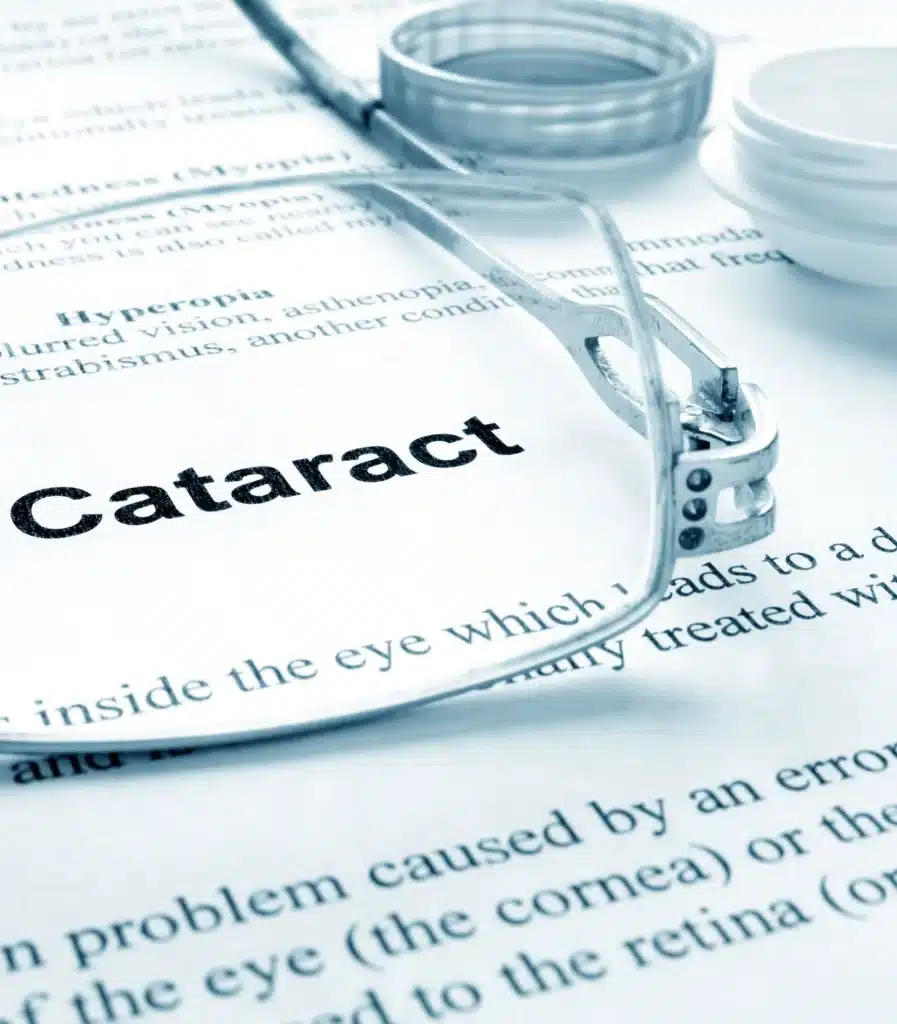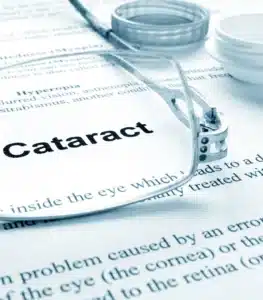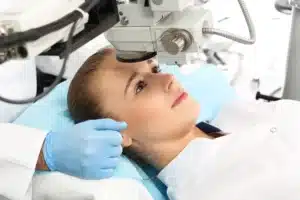The eyes work in miraculous ways to bless us with the wonderful gift of vision, but that doesn’t mean the eyes are perfect by any stretch of the imagination. Especially as we age, the eyes are prone to a number of conditions and diseases that have a negative impact on our ability to see.
Glaucoma and cataracts are two of the most common eye diseases in the world today. They affect millions of people every single year, are both highly linked to the normal aging process and are both treatable eye conditions – so long as the condition is detected in its earliest stages.
With that said, glaucoma and cataracts are two completely different eye conditions that affect different parts of the eye structure and its overall function. Don’t worry, we’re going to discuss the differences between both glaucoma and cataracts, as well as what they could mean for your eye health and vision.
What Are Cataracts?
A cataract is clouding the eye’s natural lens, which is normally crystalline clear. As you age, the proteins and fibers in the eye begin to break down, which results in blurry or cloudy vision. Cataracts are also sometimes caused by surgery, injury, or other health conditions or problems.
The eye’s natural lens is responsible for focusing light into the back of the eye, also known as the retina. The retina then converts the light into an electrical signal and sends it to the brain via the optic nerve. Once it enters the brain, it’s processed into an image, which is what we see.
Looking through a cloudy lens is a lot like looking through a foggy window or frosted glass. It disrupts the individual’s ability to read, identify faces, drive on the road, and much more. With early detection and a quality treatment plan, you can improve your vision as you age in peace.
Symptoms of a Cataract
Many people with a cataract are unaware they have it, especially since most people don’t notice the symptoms at first. They gradually worsen as the eye becomes more and more cloudy until it begins to interfere with the individual’s quality of life – which is usually when they seek help.
In an effort to detect a cataract in its early stages, let’s take a look at some of the most common symptoms of cataracts:
- Clouded or blurred vision
- Poor night vision
- Sensitivity to light, frequent glares
- Need a lot of light to read
- Seeing ‘halos’ around lights
- Need to change your eye prescription frequently
- Fading or yellowing of colors
- Double vision in one eye
If you notice any of these symptoms, you should schedule a visit with your eye doctor right away. You should also be scheduling an annual eye exam with your ophthalmologist to promote early detection and prevention. An annual eye exam goes a long way in protecting your eyes.
Treatments for Cataracts
While there’s no cure for cataracts and we’re all at risk of experiencing it as we age, it remains a heavily treatable condition – especially with early detection and a proper diagnosis. Your eye doctor will perform several tests to diagnose it, including a retinal exam and slit lamp exam.
The most common treatment for cataracts is cataract surgery. During this procedure, the patient’s cloudy lens is removed and replaced by a clear artificial lens, also known as an intraocular lens. It’s a quick, safe, and effective surgery that usually leads to fast results.
What Is Glaucoma?
Glaucoma refers to a group of eye conditions characterized by damage to the optic nerve, which acts as the mainline of communication between the retina and the brain. The damage is generally caused by an increase in eye pressure, also known as intraocular pressure.
Read more: What is Glaucoma and How is it Treated?
There are two main types of glaucoma. Primary open-angle glaucoma happens when fluid isn’t draining properly, leading to a gradual increase in eye pressure. Acute angle-closure glaucoma happens when the eye’s drainage angle is blocked, leading to a sudden increase in pressure.
As the eye pressure increases, the optic nerve becomes damaged and vision loss is imminent. It’s one of the leading causes of blindness in people above the age of 60 and often presents itself with no symptoms until its later stages. That’s why annual eye exams are so important.
Much like cataracts, early detection is extremely important to protect your vision from glaucoma. Since symptoms usually aren’t present in the early stages, an annual eye exam will help detect problem areas and warning signs before they start to impact your eye health.
The two most common symptoms of acute angle-closure glaucoma include patchy blind spots in your peripheral vision or central vision and tunnel vision. With that said, symptoms usually aren’t noticeable until the advanced stages, meaning it usually goes undetected for a long time.
The most common symptoms of primary open-angle glaucoma include headaches, eye pain, nausea, vomiting, blurry vision, ‘halos’ around lights, and redness of the eye. If you notice any of these symptoms, schedule an eye exam with your trusted ophthalmologist immediately.
Diagnosing glaucoma generally includes reviewing your personal and family medical history and performing a variety of tests – such as tonometry (intraocular pressure), dilated eye exam, imaging tests, visual field test, measuring corneal thickness, and inspecting the drainage angle.
Although the damage to the optic nerve can’t be reversed, you can slow down the rate of future vision loss with glaucoma treatment. This usually involves prescription eye drops, oral medication, glaucoma surgery, laser treatment, or a combination of the four. Your doctor will determine the best route.
Cataracts vs Glaucoma: Which One Do You Have?
If you believe you have cataracts or glaucoma, don’t hesitate to reach out to Milwaukee Eye Surgeons right away. A comprehensive eye exam can not only help detect eye problems but also diagnose them and get you on the fast track to treatment. Our team is here to help!
With the right technology, knowledge, and passion, we can help preserve your vision for as long as physically possible – that way, you can live a quality, happy, healthy, and rewarding life. After all, that’s what we all want, isn’t it? Contact us today – we can’t wait to preserve your eyesight!






